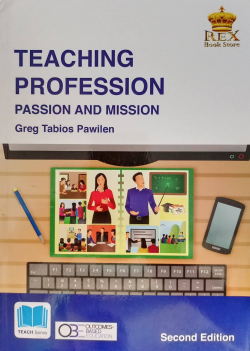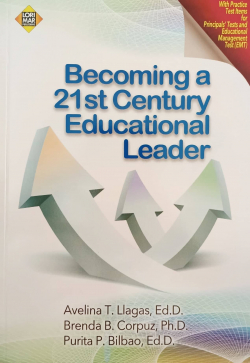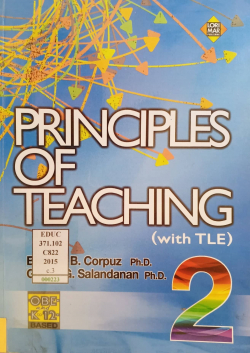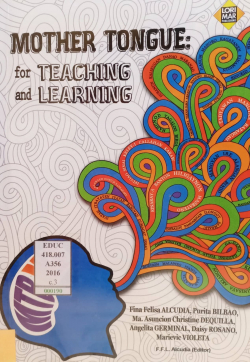The teaching profession
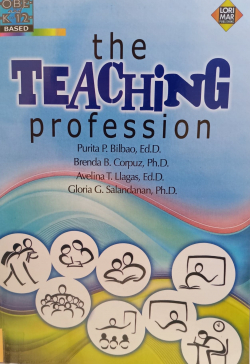
Buy online ($)
Type
Book
Authors
Bilbao ( Bilbao, Purita P. )
Corpuz ( Corpuz, Brenda B. )
Llagas ( Llagas, Avelina T. )
Salandanan ( Salandanan, Gloria G. )
ISBN 13
9789716857450
Category
EDUC
[ Browse Items ]
Publication Year
2015
Publisher
LORIMAR PUBLISHING, INC., Philippines
Pages
viii, 274 pages
Subject
Education
Abstract
This book is a humble response to the need for instructional materials for The Teaching Profession, a three-unit course of the new teacher education curriculum. lt attempts to give the prospective professional teacher a comprehensive view of his/ her multifarious task to enable him her make an informed decision on whether or not he she pursues teaching as a profession or give it up for a more lucrative one. That teaching does not attract the “best and the brightest“ is a given. The prevalence of “those who can‘t, teach” mentality, is confirmed by the present “teacher oversupply of mediocrity”, the high mortality rate in the Licensure Examination for Teachers (LET) annually for the past ten years (from sixty-five percent (6500) to seventy-five percent (7500), and the Congressional report on “continuously deteriorating quality of education in the country”.
Amidst this bleak context, however, are pockets of individual teachers throughout the country who demonstrate high degree of competence and commitment to the teaching profession. Their number must necessarily increase to form a critical mass and be the “yeast” to the leaven of teachers or run the risk of becoming endangered species and face extinction from the face of the earth. If this book has contributed to the formation of teachers who will make a difference in the classroom and the community, then it has achieved its ultimate purpose.
Chapter One dwells on the teacher as an individual member of society. For him/her to be able to play his/her roles as society expects him/her, he/she must be grounded on a personal unifying philosophy, must be deep in his/her moral convictions and strong in his/her ethical principles and must embark on a lifetime project of values formation. To heighten the nobility of teaching, it is discussed not only as a profession but also as a vocation and a mission.
Chapter Two describes the classroom and the teacher in community. He/she is shown as a facilitator of learning in the classroom and as a partner of the home and the community in the education of the child. To be the ideal teacher in the classroom and in the community he/she has to meet the National Competency-Based Teacher Standards (NCBTS), the standards of good teaching in the Philippines. To be relevant he/she must be equipped with the let century skills. Her teaching skills must include full use of human as well as material resources in the community with which s/he will be acquainted in his/her networking efforts with organizations, foundations and other institutions in the community.
Chapter Three presents the global teacher as one who can teach multicultural groups of children, is familiar with the educational practices of selected countries for bench marking and adept in the use of educational technology in order not to be left behind. For continuing widening of outlook, the global teacher participates in teacher exchange programs.
Chapters Four and Five are laws on the professionalization of teaching and the Code of Ethics for Professional Teachers.
Chapter Six focuses on education and teacher-related laws that guarantee exercise of teachers’ rights and privileges so they can perform their duties and responsibilities competently. Chapter Seven traces a brief history of the Philippine educational system and the journey of basic education curricular forms for six decades.
Amidst this bleak context, however, are pockets of individual teachers throughout the country who demonstrate high degree of competence and commitment to the teaching profession. Their number must necessarily increase to form a critical mass and be the “yeast” to the leaven of teachers or run the risk of becoming endangered species and face extinction from the face of the earth. If this book has contributed to the formation of teachers who will make a difference in the classroom and the community, then it has achieved its ultimate purpose.
Chapter One dwells on the teacher as an individual member of society. For him/her to be able to play his/her roles as society expects him/her, he/she must be grounded on a personal unifying philosophy, must be deep in his/her moral convictions and strong in his/her ethical principles and must embark on a lifetime project of values formation. To heighten the nobility of teaching, it is discussed not only as a profession but also as a vocation and a mission.
Chapter Two describes the classroom and the teacher in community. He/she is shown as a facilitator of learning in the classroom and as a partner of the home and the community in the education of the child. To be the ideal teacher in the classroom and in the community he/she has to meet the National Competency-Based Teacher Standards (NCBTS), the standards of good teaching in the Philippines. To be relevant he/she must be equipped with the let century skills. Her teaching skills must include full use of human as well as material resources in the community with which s/he will be acquainted in his/her networking efforts with organizations, foundations and other institutions in the community.
Chapter Three presents the global teacher as one who can teach multicultural groups of children, is familiar with the educational practices of selected countries for bench marking and adept in the use of educational technology in order not to be left behind. For continuing widening of outlook, the global teacher participates in teacher exchange programs.
Chapters Four and Five are laws on the professionalization of teaching and the Code of Ethics for Professional Teachers.
Chapter Six focuses on education and teacher-related laws that guarantee exercise of teachers’ rights and privileges so they can perform their duties and responsibilities competently. Chapter Seven traces a brief history of the Philippine educational system and the journey of basic education curricular forms for six decades.
Description
Illustration ; 26 cm ; Newsprint
Includes bibliographic reference
Includes bibliographic reference
Number of Copies
3
| Library | Accession No | Call No | Copy No | Edition | Location | Availability |
|---|---|---|---|---|---|---|
| Main | 210 |
EDUC 371.1 B595 2015 |
1 | EDUCATION REFERENCE | Yes | |
| Main | 211 |
EDUC 371.1 B595 2015 |
2 | EDUCATION REFERENCE | Yes | |
| Main | 212 |
EDUC 371.1 B595 2015 |
3 | EDUCATION REFERENCE | Yes |

